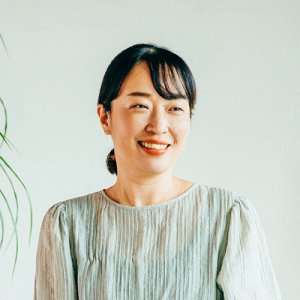AkeruE, Panasonic’s New Creative Museum, Turns Inspiration Into Reality
On Saturday Apr. 3, Panasonic opened its AkeruE, a creative museum in the Panasonic Center Tokyo. As a partner of Panasonic, Loftwork worked with Panasonic on the construction of the museum and now manages the facility that is creating a community for co-learning.
Here are just some highlights of AkeruE.

What is a "creative" museum?
Both a science and art museum, AkeruE is located on the 2nd and 3rd floors of the Panasonic Center Tokyo, just a short walk from Kokusai Tenjijo Station.
The concept behind the museum is to “turn Eureka into reality.” To do this, AkeruE combines the elements of a science museum that nurture the intellect with those of a museum that nurture the senses. It also includes a creative workshop where visitors can learn through creating.
The name “AkeruE” is Archimedes’ famous interjection “Eureka” backwards and takes on a double meaning as “ariake’ means dawn, and “AkeruE” aims to be a place that inspires the dawning a new era, according to the LAYOUT UNIT group, which has been involved with the building since its conception.


Enter through an ecological exhibition and try out the latest laser cutting and 3D printing technology

Entering the museum from the second floor, visitors first encounter the “GAIA” area, where they can experience and learn about how humans and nature interact with and are interrelated and connected to each other.
The area features a round, earth-like installation that utilizes aquaponics, a farming method that grows fish and plants in the same environment. Microorganisms decompose the dirty water in the fish tank, the plants then absorb the nutrients from the water and return clean water to the tank.

At the back of the building, past the GAIA area, is “TECHNITO,” an area filled with 3D printers, laser cutters and other digital fabrication equipment. The area will be home to workshops, where attendees can create things by combining programming and electronics.

Next to the entrance, there is also “CHAOS”, a space for creators and visitors to interact with each other. Upon entering the area, visitors will notice it is filled with upcycled items, from a jumping box that’s been converted to a chair and a flower pot to a drum.
Experience art, learn about science and technology and make things with your own hands!
Ascending to the third floor, visitors enter a circular room with a large mirror.

Broaden your perspective at ASTRO, a collection of works that fuse different genres like art and technology

Walking through, visitors exit the room into the ASTRO area, a permanent collection of works that combine different genres such as art, technology, engineering and science.
Next to each piece, there is an “experimental device” that allows the viewer to experience the movement and mechanism of the artwork. The device aims to help the viewer engage with the piece of art beyond purely thinking it beautiful or interesting by solving its mystery. Viewer are prompted to think about and discover the answer to the question of “Why is this happening?”. They are then able to experience the “Oh, I see!” moment, a fun experience for not only for children but also adults.

One of the works on display, “Bulging and Flowing” by artists Sachiko Kodama/Minako Takeno, was a trending topic on Twitter. The black liquid in the piece appears to move in response to visitors’ voices, changing and becoming mysterious shapes through reacting to magnetic forces, a sight that is a whole different experience in person.

The exhibition area is not laid out in any particular order, placing value on the ideas and impulses of children. Visitors are free to wander as they please, looking at one piece and then go back to the previous work if it calls out to them.

COSMOS: Unleashing the unlimited imagination and creativity of children

Nearby is the COSMOS area, where children can freely express their ideas and inspirations based on a theme. In this workshop area, children can answer a question written on a theme sheet by creating their own works of art using their favorite materials. The works are then lined up on the stage, combining with the creations of other children to become one big work. Visitors can witness the creativity and colorful imaginations of the children exploding in this area.


In addition, the artworks are not just lined up and put on display, but scanned by sensors installed in the ceiling, which connects works that are close to each other using lines of light. This design encourages children to also make discoveries, allowing them to compare the differences between other people’s ideas and their own and to reflect on their own thinking by looking at the whole picture.
PHOTON: Experience communicating and conveying ideas through producing video and animation

The third area on this floor is PHOTON, where visitors can transmit their thoughts using video, photos and animation. PHOTON makes it easy and quick for people to assemble their ideas and creations into a story with video, share their creations with others, and undergo the experience of communicating and conveying ideas.
While the other two areas are focused on helping people to encounter new discoveries and give shape to their imagination, the PHOTON area aims to help people communicate and connect.

Inspiration is not just about discovery. It is the gateway to new ways of thinking.
A trip to AkeruE, which is based on the concept of “giving shape to inspiration,” shows that inspiration is not only about new discoveries, but also about the way of thinking, the means, and the knowledge that supports the excitement of seeing a certain object. Both adults and children may start to think about things from different angles, scientifically, visually and so on, helping them broaden their horizons. Seeing is believing. Be sure to visit AkeruE with your family and friends!


Next Contents










